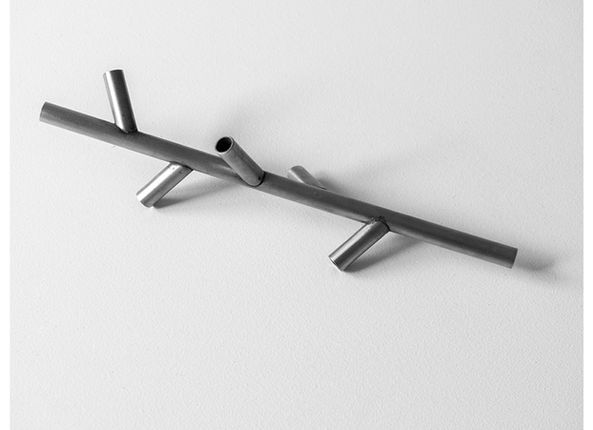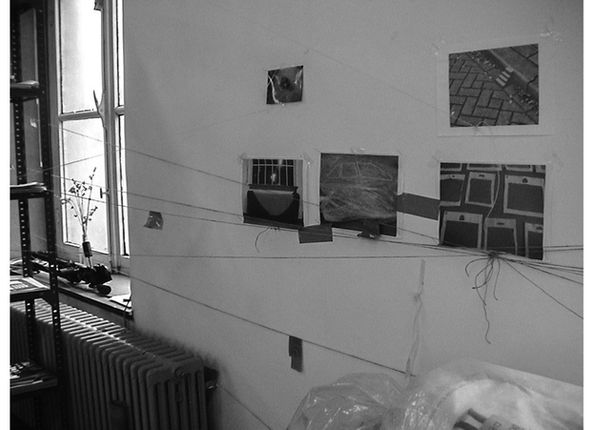THINKTWIG
Thinktwig is an instrument. Like many sophisticated tools and musical instruments it's made of durable metal.
Thinktwig (text, instrument and various interpretations)
Text — see below
Instrument — Dimensions: 18 x 8 cm / Material: stainless steel / Year: 2002
Interpretations (Archive, Maps, Objects) — Dimensions: various /materials: mixed media / Year: 2002-2006
Thinktwig is an instrument. Like many sophisticat-ed tools (A.) and musical instruments (B.) it’s made of durable metal. On a long tube, one centimeter thick, multiple shorter tubes are placed at the same angle and at equal distances from each other in seemingly random directions. Both the short and long tubes are hollow and open at the ends, allowing air to move freely through the instrument.
A.
A trained technician performs measurements with the instrument. He tilts, turns, and moves the instrument, until two objects, images or words are located at its open ends. He writes down the length of the part of the instrument that covers the distance between the objects, images or words, and moves on to a new measurement.
The silence during the measuring is replaced by the constant tapping of fingers on all open ends — a sound that finally stops as the technician slowly writes down the results of his calculations. He leans back, growls and murmurs, digging into his notebook again to find out what went wrong. Now the sounds of calculation and measurement start to resemble a spade repeatedly hitting the ground.
It seems as if the words, images, objects… were not placed on the hollow ends of the instrument, but appear to grow from small twigs. Twigs which lead back to branches, branches to a trunk, the trunk down to the roots. These twigs can be very fragile. Sometimes merely to pick a fruit at the end of a twig can crack it and break it in two, scattering the other fruits over the ground.
B.
A musician uses the instrument to create an endless soundscape. He cannot simply put his fingers, words, images or objects on the small tubes. He must first perforate each object, image or word to allow each extraneous sound wave to get in, and each internal sound wave to move out and to continue, perhaps slightly distorted, in various di-
rections, to enter new objects, images or words and so on…
The musician must handle the instrument very skillfully, curving one arm above and below the other to cover the right holes. When at last the sound moves through it, the small instrument seems no more than part of a much larger instrument; an instrument with an endless amount of tubes; an organism of which each object, image and word is its fruit and its root and yet neither. It has become a carpet of sound in which no single sound drowns out another. The final sound is incomprehensible to the ear but has a melancholic tone, evoking the image of a blackbird singing on a bending twig.





































